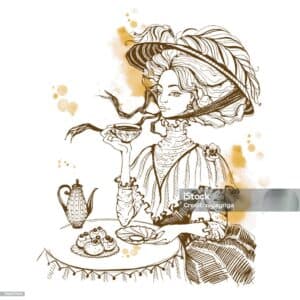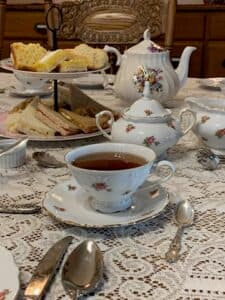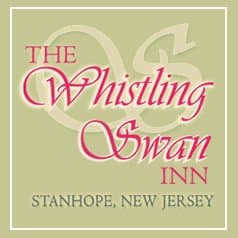A Brief History of Victorian Tea
Originating in the 1800s, afternoon tea gained popularity among the wealthier classes who found themselves hungry between lunch and late dinners. As lighting technology evolved, dinner was served later and later. It is said that the credit for popularizing afternoon tea goes to Anna Russell, the Duchess of Bedford and lady-in-waiting to Queen Victoria. The Duchess found herself feeling hungry and fatigued during the long wait between meals, leading her to introduce the idea of having a pot of tea and some light snacks in her boudoir around 4 p.m. to curb her hunger and rejuvenate her spirits, she eventually began inviting others to join her - sparking a trend among the elite in British society.

This innovative idea soon caught on and became a fashionable social event among the elite class, spreading across Britain and eventually evolving into the beloved tradition of afternoon tea. The practice of gathering to enjoy a selection of teas, finger sandwiches, scones, and pastries in the afternoon became a popular way for people to socialize, relax, and indulge in delectable treats. Today, afternoon tea remains a delightful and refined custom that continues to be cherished by many around the world, embodying elegance and sophistication in a leisurely setting.

Afternoon Tea - Celebrating the Essence ofFemininity
During the Victorian and Edwardian eras, afternoon tea became a popular social ritual primarily enjoyed by women in the comfort of their homes. Initially, women would partake in this activity privately in their boudoirs, but it soon transitioned to being a shared experience in parlors, as depicted in various period dramas. The afternoon tea setting provided a female-centric space where women could engage in conversations and socialize freely, which was not always possible in the public sphere due to societal norms and restrictions on women's movements.
At that time, men and women often pursued separate activities during the day, with women having limited opportunities for social interaction outside the home. The emergence of afternoon tea offered a welcomed chance for women to gather, share thoughts, and build connections with other women. Since women were typically not allowed to dine alone or without a male companion, afternoon tea became a popular and socially acceptable way for women to come together and enjoy each other's company in a domestic setting.
Furthermore, hosting afternoon tea allowed women to exhibit their tea sets, the quality of their tea, and their serving skills, serving as a means for them to demonstrate their wealth and social status within their social circles. Despite the limitations imposed on women's roles and activities during that period, afternoon tea provided a platform for women to assert influence and autonomy within the confines of their domestic sphere, showcasing their abilities as gracious hostesses and gatekeepers of social etiquette.
What's on the Menu?
The tradition of serving nibbles during afternoon tea has indeed evolved over time, with the classic finger sandwich being a staple component from the early days. These delicate sandwiches are not only convenient to eat while sipping tea but also provide just the right amount of sustenance to stave off hunger until the evening meal. The evolution of nibbles for afternoon tea has seen a variety of other treats added to the spread, such as scones, cakes, pastries, and even savory snacks, catering to different tastes and preferences. The finger sandwich remains a timeless favorite, embodying elegance and simplicity in every bite.
These delicate sandwiches were often made with cream cheese or butter, which helped maintain the bread's freshness and texture while waiting to be served. As time passed, the menu expanded to include sweets, leading to the evolution of serving cakes and champagne alongside tea and sandwiches. This custom of indulging in a selection of treats after the initial tea and sandwiches became a beloved tradition associated with Victorian tea parties, adding an element of elegance and refinement to the social gatherings of the time. The combination of savory sandwiches and sweet delicacies contributed to the overall experience of Victorian Tea, creating a delightful and sophisticated culinary affair.
The Whistling Swan Inn hosts Victorian Tea throughout the year in our dining room and parlors. Weather permitting, tea is served in the garden and on the porch. For the most up to date offerings, visit our events page here
